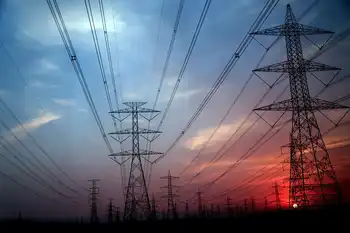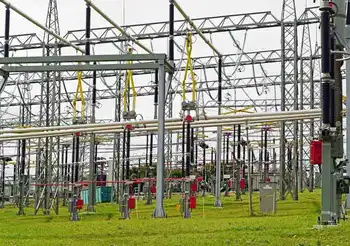Indiana poised to adopt minimum federal mercury emissions goals
For environmentalists, the reduction goal falls short because mercury is a potent neurotoxin that ends up in the food chain and can lower the intelligence of children whose mothers eat tainted fish during pregnancy.
Utility officials contend the timeline - the same one agreed to by about half of all states - will cut emissions while keeping electricity rates low in the state.
The Indiana Air Pollution Control Board heard nearly six hours of sometimes heated testimony recently from the two sides before voting 7-4 to preliminarily adopt the minimum federal Clean Air Mercury Rule.
That rule requires a 66 percent cut in Indiana's mercury emissions by 2018. However, the state won't actually meet that goal until 2025 because of a provision that allows plants that stay below their mercury cap to bank or sell emission credits to plants exceeding their cap.
Environmentalists said swifter action is needed considering the amount of mercury released in the state. In 2005, it came to 6,435 pounds, or more than 3 tons.
"This shouldn't take us 20 years to accomplish," said Indra Frank, a member of the Hoosier Environmental Council.
Indiana is the nation's fourth-largest mercury emitter, with 23 coal-fired power plants that spew the chemical into the air from smoke that billows from their smokestacks. The state derives 95 percent of its electricity from coal-fired power plants.
Mercury, which occurs naturally in coal, enters the food chain through precipitation that has helped lace Indiana's waterways with mercury. It then shows up in fish, leading to statewide advisories against consuming certain fish.
Frank, a physician, said pregnant or nursing women who eat mercury-tainted fish unwittingly can cause brain damage in their children because it destroys nerve cells as a child's nervous system is still developing.
"The impact can be dramatic, with damage to skills in language, attention and memory," she said.
Low-income and minority residents who rely on river-caught fish for substantial portions of their diets are most at risk because they might not know about warnings to avoid eating some fish species or fish of a certain size, Frank said.
Tim Maloney, the executive director of the Hoosier Environmental Council, asked the air board during a recent hearing to consider his group's plan, which would reduce mercury emissions 90 percent by 2010.
Representatives of the utility industry argued that doing so would lead to big rate hikes for consumers.
Stan Pinegar, vice president of the Indiana Energy Association, told the board that the Environmental Protection Agency's minimum mercury rule will cost the Indiana power utilities $64 million to $68 million a year.
In contrast, he said the Hoosier Environmental Council's 90 percent proposal would cost $207 million to $373 million a year. Such a costly cut would end the low electricity rates the state enjoys from burning its plentiful coal deposits, helping to fuel Indiana's economic development, Pinegar said.
"This is how we're selling our state," said Pinegar, whose group is the trade association for Indiana's utility companies.
During a recent meeting, the board also rejected a compromise proposal by another group, Improving Kids' Environment, that called for cutting mercury emissions to 75 percent, instead of 66 percent, and moving up the goal to 2015 from 2018.
Air pollution control board member Thomas Anderson, who heads the Michigan City-based Save the Dunes Council, was one of the panel's four members who voted against preliminary adoption of the minimum rule.
He said Indiana should follow other states, such as Illinois, that have adopted more aggressive mercury release curbs. Anderson hopes that before the board gives final approval, it changes the rule to include higher reduction goals or a shorter timeframe.
"For the purpose of public heath and especially children's health we think that would be an important move in the right direction," he said.
Rob Elstro, a spokesman for the Indiana Department of Environmental Management, said the air control board is expected to give the mercury rule final approval sometime this fall.
About half of the 50 states have chosen to adopt the minimum EPA rule, while the others have decided it's too weak and are pursuing tougher measures, said Bill Becker, executive director of the National Association of Clean Air Agencies.
Under federal rules, states can choose either path for reducing mercury emissions.
Becker said the evidence shows that the technological expertise for mercury controls is available right now despite what power industry officials claim.
"What we've learned throughout environmental protection's history is the notion of 'build it and they will come.' Set a rule and industry with its wisdom and expertise is able to find cost-effective ways of achieving that reduction," he said.
Related News

Frustration Mounts as Houston's Power Outage Extends
TEXAS - Houston is enduring significant frustration and hardship as a power outage stretches into its fourth day amid a sweltering heatwave. The extended blackout has exacerbated the challenges faced by residents in one of the nation’s largest and most dynamic cities, underscoring the critical need for reliable infrastructure and effective emergency response systems.
The power outage began early in the week, coinciding with a severe heatwave that has driven temperatures to dangerous levels. With the city experiencing some of the highest temperatures of the year, the lack of electricity has left residents without essential cooling, contributing to widespread discomfort…





